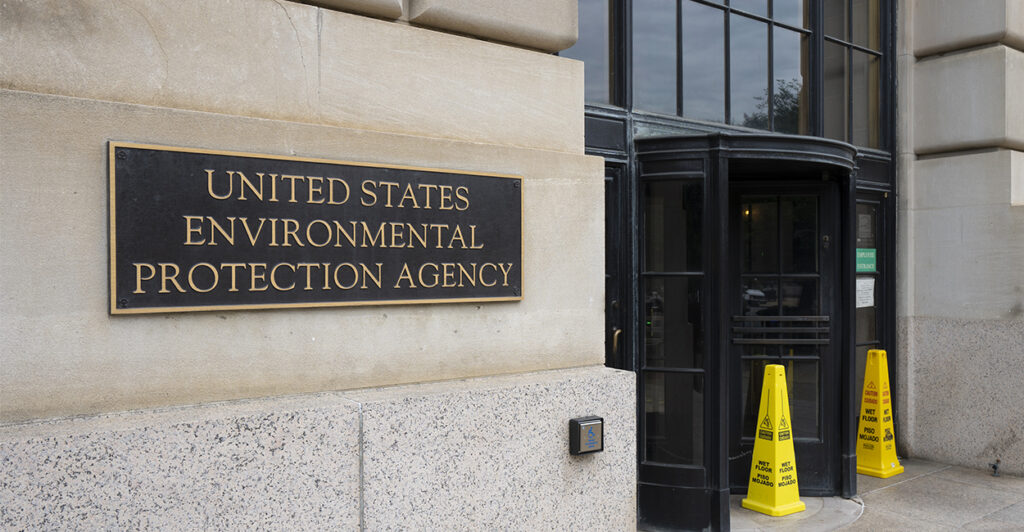The Environmental Protection Agency is using shaky science to tighten regulations on ambient levels of tiny particulate matter in the air—from dust to fireplace smoke to car exhaust—in other words, essential byproducts of industrial activity and daily life. If the final rule, which is expected in the coming months, is anything like the proposed rule, the EPA will continue to give itself increasing authority to regulate more of American life.
Alexis de Tocqueville wrote in “Democracy in America” about a soft despotism in which the ruling class covers society with a network of complicated rules until the people become “a flock of timid and industrious animals, of which the government is the shepherd.”
The problem today may be worse than what Tocqueville saw—the EPA is abusing our timidity, and it may not even allow us to be industrious anymore.
As federal rules keep getting stricter and more complicated, it’s easy to see the wisdom—and the warning—in Tocqueville’s work. From climate alarmism to emergency injections for COVID-19, we’re told that government leaders know best and that we should trust “The Science.” The EPA is taking the same approach with its proposal to tighten regulations on the levels of fine particulate matter in the air.
The stakes are high. This time, if we give in to the “trust The Science” crowd, we risk handing over the master key that will allow the EPA to overregulate just about everything we do. Under the proposed rule, states would have to do what the EPA says or risk losing their highway funds.
This means regulators would control mundane things like whether you can burn wood in your fireplace without industrial-grade technology to filter the exhaust. Driving a car might come under intense scrutiny not only for directly emitting particulate matter from the exhaust but for kicking up too much “fugitive dust,” as the EPA puts it, from dirt roads.
Further, other rules covering completely different substances like mercury from coal-fired power plants could be justified using merely the assumed health benefits of reducing particulate matter.
This is a crucial side effect of the rule because the largest electricity market in the country is pleading with the EPA to slow down the retirement of coal-fired power plants—too many retirements at too fast a pace will almost certainly cause strained conditions on the power grid and contribute to widespread blackouts during winter storms.
According to EPA scientists, fine particulate matter kills thousands of Americans each year. Owing its name to the tiny particle size of about 2.5 microns (about 1/30th of the width of a human hair), PM2.5 (for “particulate matter 2.5”) is not only deadly to inhale at high concentrations, but—and this is significant—EPA makes the unfounded leap to say it is still deadly at concentrations approaching zero.
In other words, the EPA thinks any amount of it might kill you. Some call this a “linear, no safe threshold” relationship between the concentration of a pollutant and the negative health reactions. Keep in mind we’re talking about something commonplace, including smoke from natural wood fires and dust from driving on dirt roads.
Never mind that the EPA didn’t regulate PM2.5 before 1997 and has already tightened the standard from a concentration of 15 micrograms per cubic meter to 12. Also leave aside for a moment that America’s PM2.5 standards are nearly twice as strict as those in Europe and that PM2.5 exposures in Chinese cities consistently reach three to ten times the U.S. standard.
You may not even know what PM2.5 is—and in fact EPA doesn’t analyze the chemical makeup of PM2.5—but they’re sure it’s killing you, even at low doses.
The push to clean up our air at all costs may have made sense in the notoriously smoggy cities of the early 1970s. But where do we draw the line now? At what point can we say tighter standards no longer make sense?
By the EPA’s own public health logic—that there’s no safe threshold for PM2.5—it would never make sense to stop regulating it, and the standard should be zero. Indeed, if the scientists truly believe the no-threshold theory, that’s what the official EPA review of the health science of PM2.5 would say to do (these are called integrated science assessments).
Instead, the assessments talk (as real scientists do) about the uncertainty of negative health impacts at very low concentrations of PM2.5.
Whenever the EPA wants to slow industrial activity or punish fossil fuels, it can go back and tighten PM2.5 standards. Then it can rinse and repeat until the standard reaches zero.
Even if a new regulation has nothing to do with PM2.5, citing “co-benefits” of reducing PM2.5 could help justify whatever EPA wants a regulation to do. The “no threshold” theory is a blank check for new, stricter regulations whenever the administration feels like it. Such regulations could cover tighter rules on power plants, automobiles, or just about any industrial process.
In administrative parlance, this is an “arbitrary and capricious” dynamic that gives the agency too much leeway to act on a whim instead of on scientific evidence.
Here’s a modest proposal: bring back economic logic. Restore sound science by holding the EPA to a higher standard of proof for the damage it claims. Reduce regulatory burdens across the board by limiting the EPA’s use of alleged PM2.5 benefits in unrelated rules.
Now that the smoggy 1970s are behind us, let’s take a fresh look at the Clean Air Act to make sure the EPA is truly protecting public health in a way that serves Americans, not just pretending to protect us while regulating us back to the stone age.
Have an opinion about this article? To sound off, please email letters@DailySignal.com, and we’ll consider publishing your edited remarks in our regular “We Hear You” feature. Remember to include the URL or headline of the article plus your name and town and/or state.
